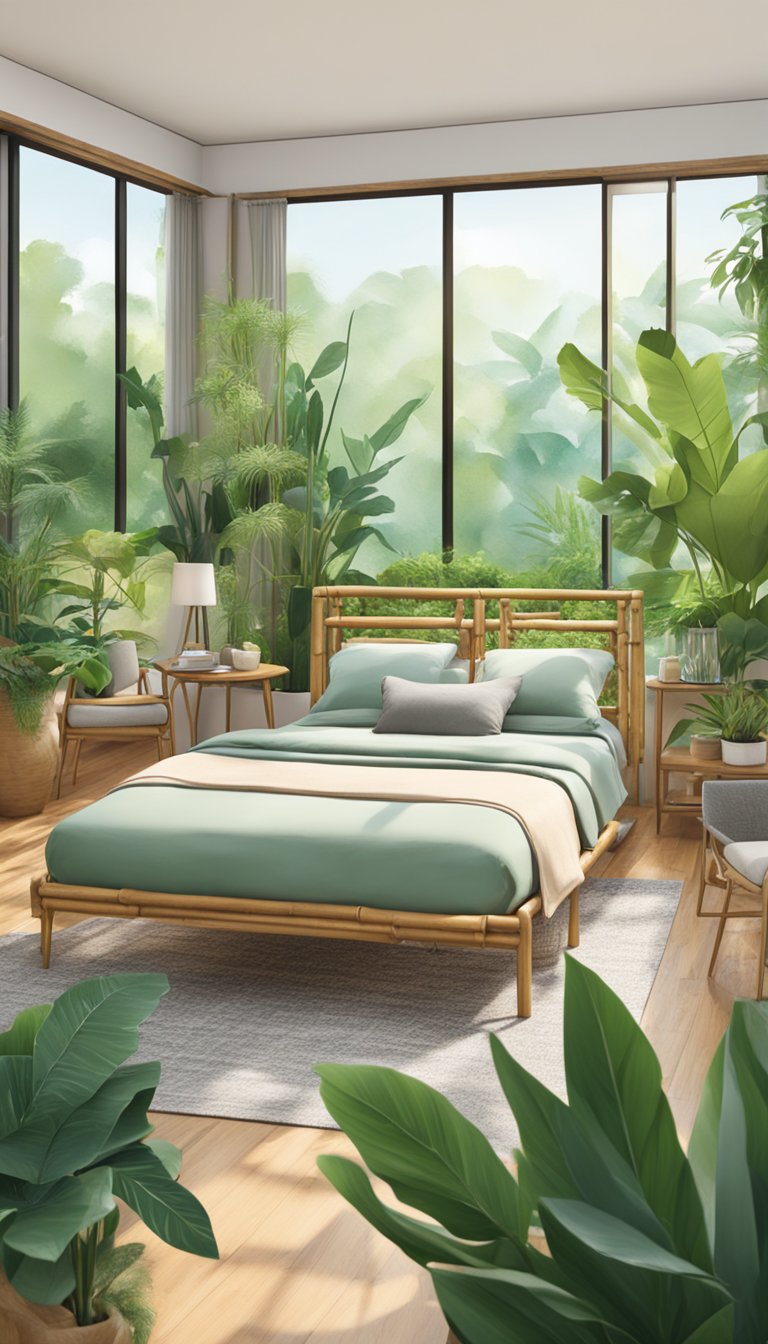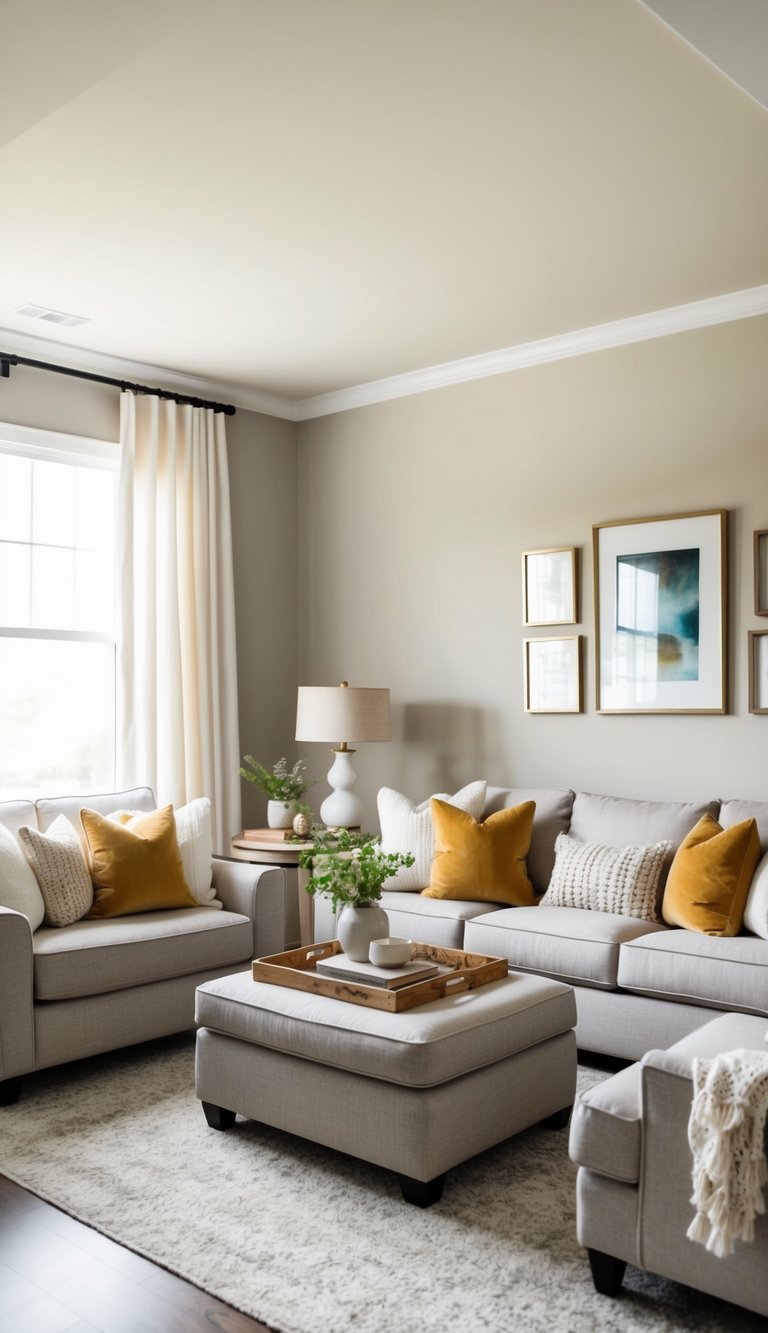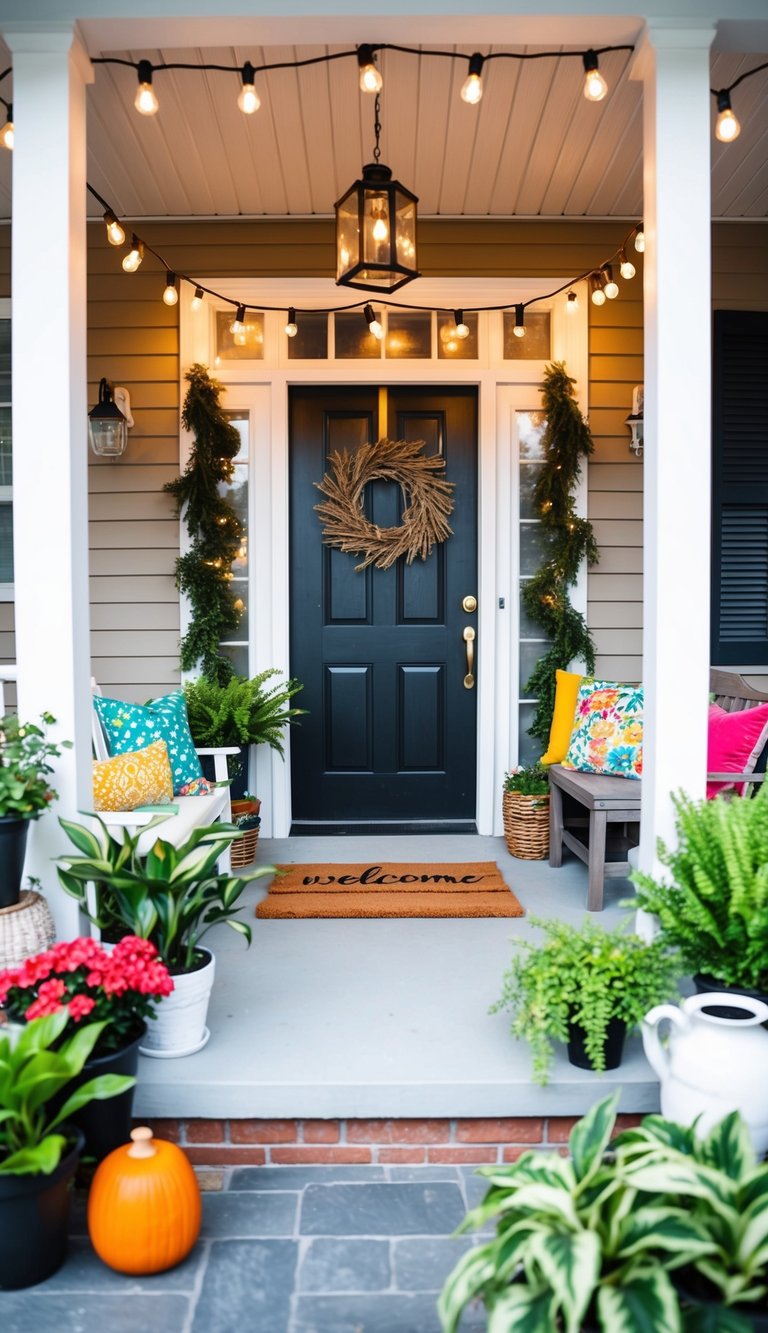It’s natural to want your front yard to feel safe, welcoming, and easy to care for. Whether you’re a senior wanting added comfort or an adult child helping a loved one, finding the right ideas can make a big difference. With the right approach, you can create a front yard that honors your needs and adds beauty to your home.
This article shares 7 front of home landscaping ideas to help you enjoy a safer, more comfortable, and independent life at home. Each suggestion is designed to be practical and simple, so you don’t have to worry about complicated care or high costs. You deserve a front yard that brings both peace of mind and pride.
1) Plant sun-loving flowers like daylilies or black-eyed Susans for bright, cheerful color.
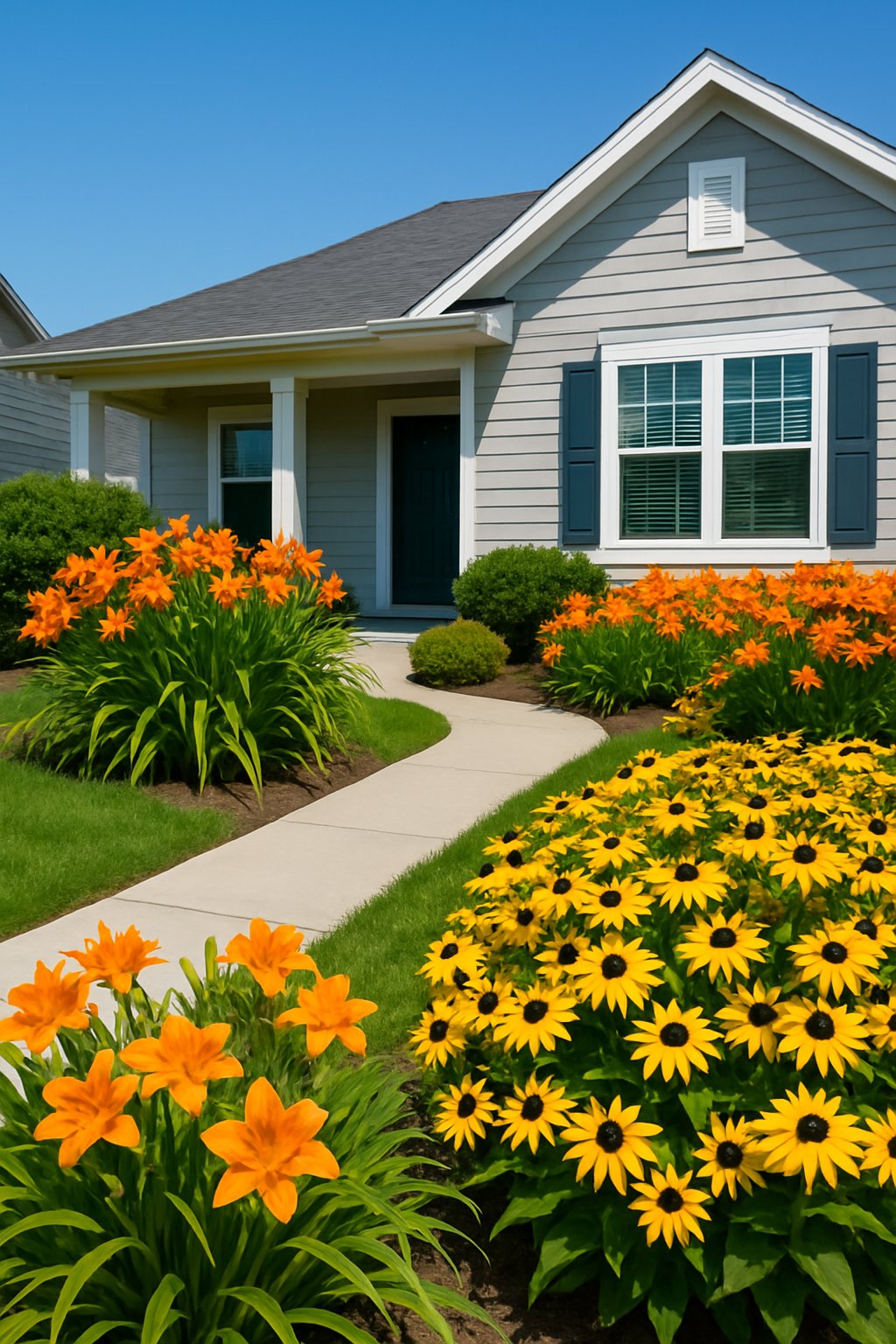
Bringing color to your front yard doesn’t have to be difficult. Sun-loving flowers like daylilies and black-eyed Susans are great options. These flowers are hardy and grow well in most sunny spots.
Daylilies come in a range of soft and bright colors. They bloom for a long time, giving your garden plenty of flowers throughout the summer. You’ll often find that once they are planted, they need just basic care.
Black-eyed Susans are another easy choice for brightening up your yard. Their yellow petals and dark centers stand out and make your home look welcoming. These flowers also attract butterflies, which can add a bit of gentle movement and interest.
Both kinds of plants can handle warm weather. Water them when the soil feels dry and remove any spent flowers to keep them neat. With these simple choices, you bring comfort and cheer to your home’s front entrance.
2) Add evergreen shrubs such as boxwood or holly for year-round greenery and structure.
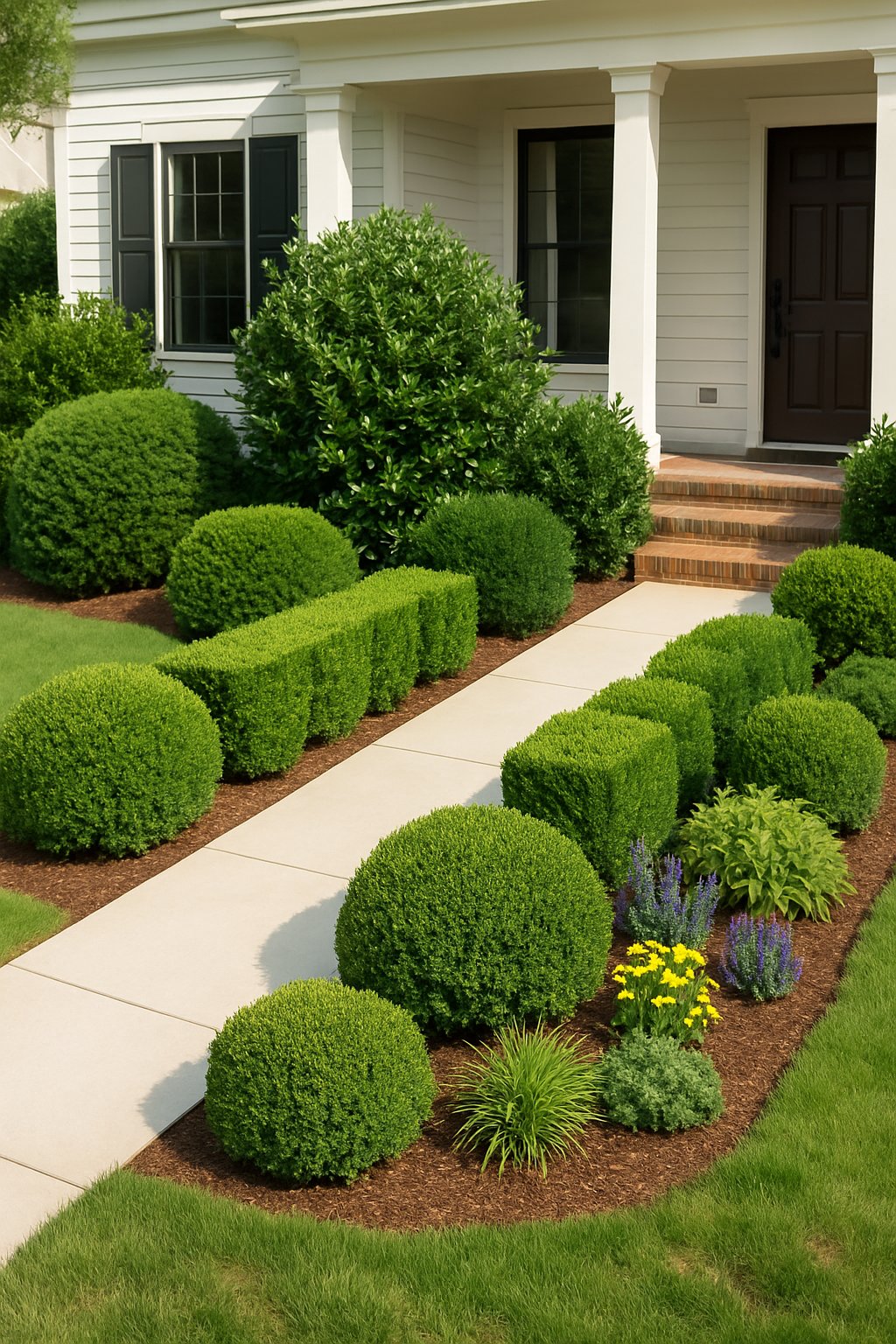
Evergreen shrubs like boxwood and holly keep your home looking vibrant, even in winter. These plants stay green all year, so your front yard always feels fresh and inviting.
Boxwood is a popular choice because it’s easy to shape and grows well in many spots. You can use it for low hedges along walkways or around porch steps. Its dense leaves help create clear borders and a tidy look.
Holly offers deep green leaves and bright berries, adding color and interest in colder months. Some varieties even attract birds, bringing simple joy to your yard. Holly can work as a foundation planting near your house or as single accent plants.
Both boxwood and holly need only basic care. Give them a little water and trim them occasionally for the best results. They can handle shade, which can be helpful if your entryway doesn’t get a lot of sun.
Adding these shrubs can make your landscape feel stable and safe. With just a few plants, you can enjoy a neat, welcoming entrance for every season.
3) Create a simple stepping stone path to guide visitors gently to your front door.

A stepping stone path offers a safe, clear way to reach your front door. It adds a welcoming touch and keeps shoes cleaner by guiding folks across grass or gravel.
You can choose large, flat stones that sit securely on level ground. Spaces between stones let grass or groundcover peek through, making the path look natural and inviting.
Start by planning the best route from the sidewalk or driveway to your door. Place each stepping stone about a foot apart, so walking feels relaxed and natural.
Consider a gentle curve instead of a straight line. A slight curve softens the look and can feel more friendly.
If you use gravel or mulch around the stones, it helps with drainage and lowers the risk of slipping. Keeping the path free of clutter and weeds also adds to the safety.
A simple stone path is easy for visitors—and for you. It’s a practical way to add both beauty and comfort to your front yard without feeling overwhelming.
4) Use low flower beds near the foundation to soften the house edges and add charm.
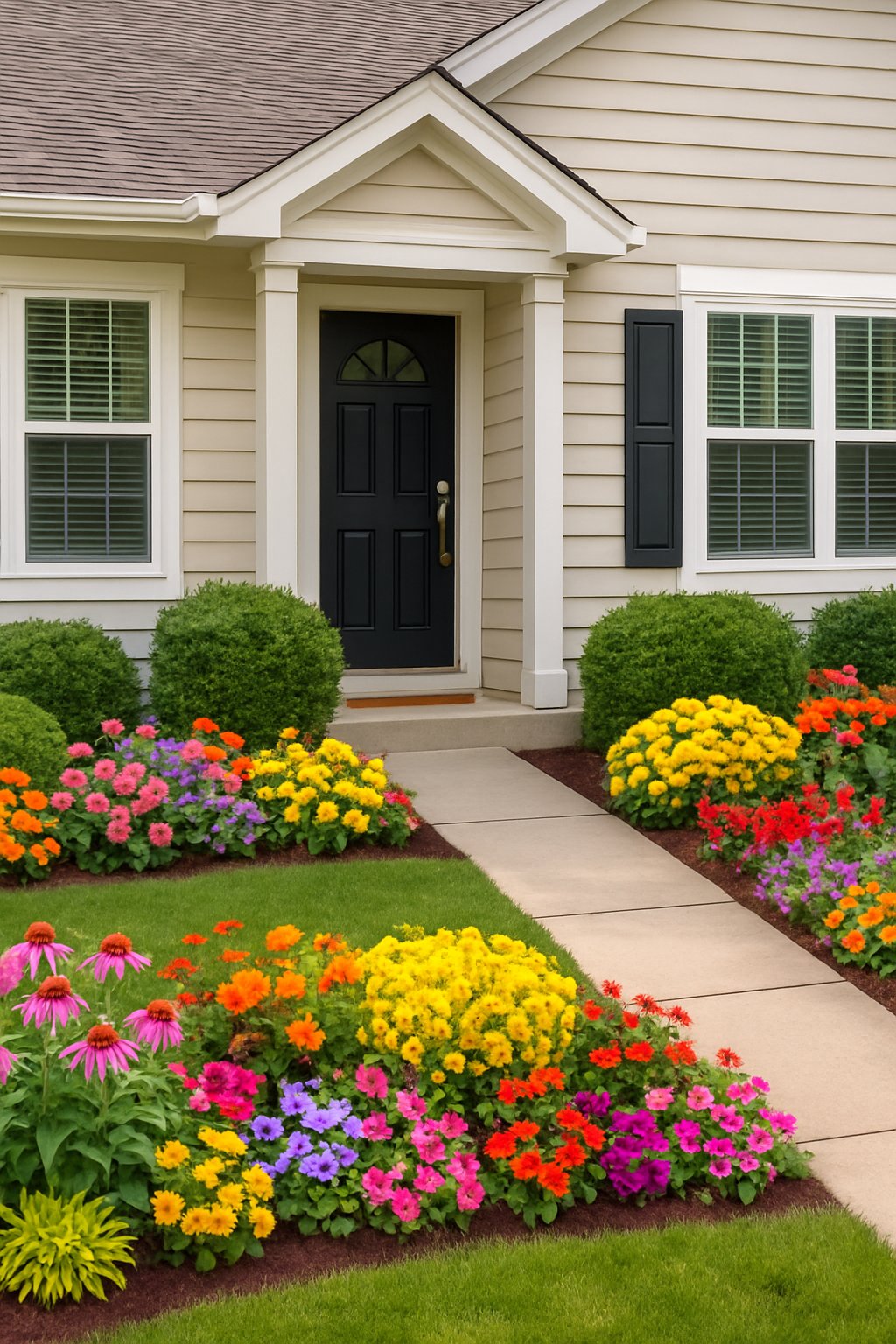
Low flower beds near your home’s foundation can gently soften any hard lines along the base of the house. When you choose plants that grow low to the ground, they won’t block windows or cover important features.
A small, neat flower bed can make your front yard feel more welcoming. These beds also add a bit of color and texture without a lot of maintenance. You may choose flowers like pansies, begonias, or hostas, which do well in these spots.
It’s a good idea to leave a small gap—about twelve inches—between your plants and the wall. This helps air flow and keeps your home foundation healthy. Mulch can keep weeds down and hold moisture for your plants.
Low beds are easy to care for and safer to trim and water. They are simple to reach, which can help if you want to take care of your flowers without bending or stretching too much. This makes them a good choice for independence and comfort in your daily routine.
5) Incorporate container plants with seasonal blooms for easy care and visual interest.

Container plants are a gentle way to add color and life to your front yard. They’re easy to move, change, or adjust with the seasons. That means you can keep things fresh without heavy digging or a lot of effort.
Choose sturdy pots that are easy to handle and not too heavy to move. Light materials like fiberglass or plastic often work well. You can place pots on your steps, beside your walkway, or near the front door for a welcoming touch.
Try planting seasonal flowers such as geraniums in spring or petunias in summer. These offer bright colors and are easy to care for. In fall, swap in mums or pansies for a cheerful boost.
If you have limited space or mobility, container gardening lets you garden at a comfortable height. Many seniors find it’s easier to water, trim, or rearrange pots without kneeling. This small change can make tending your plants safer and more enjoyable.
6) Install soft solar garden lights along walkways for safety and a welcoming glow.
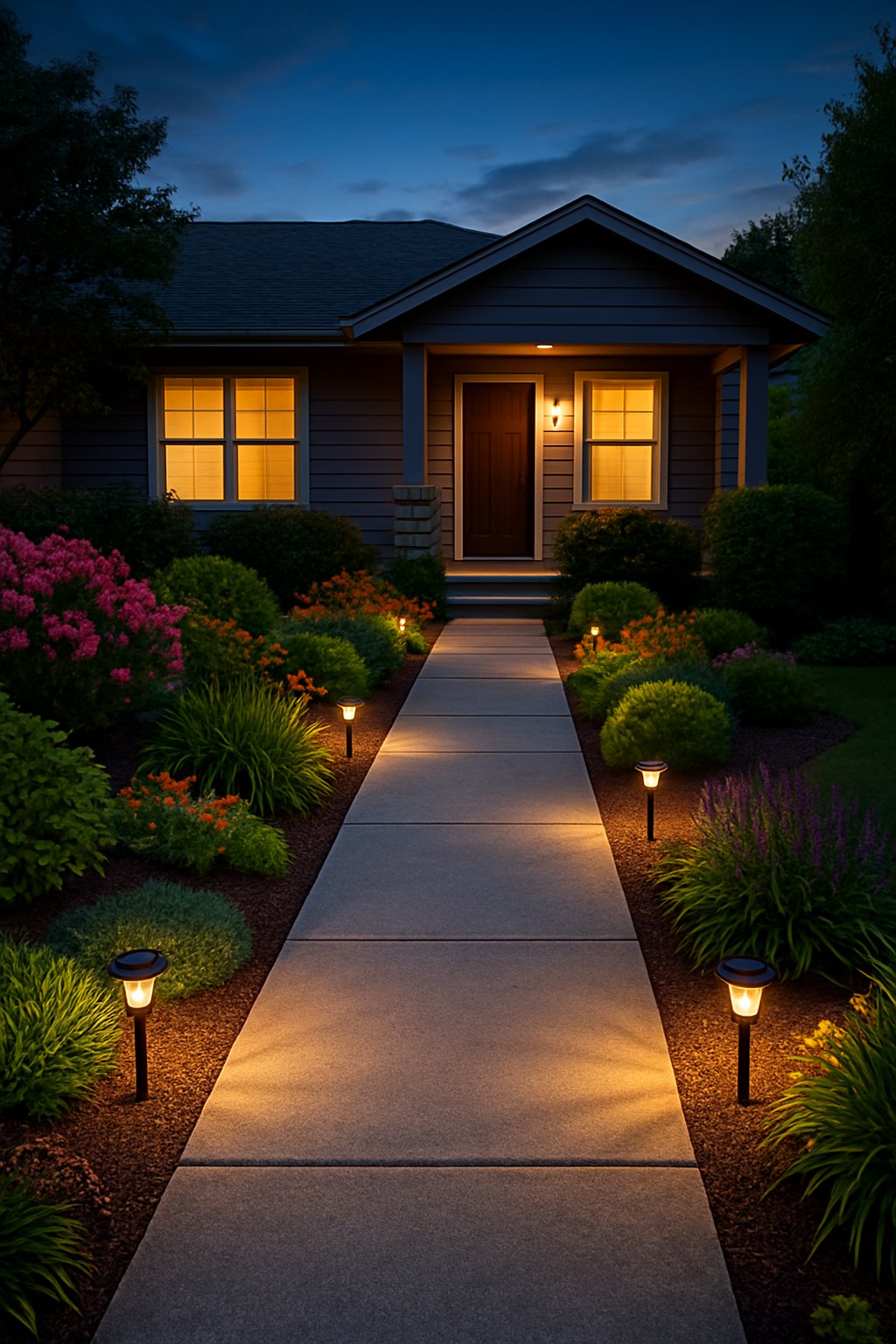
Adding solar garden lights along your walkways can make coming home at night feel easier and safer. These lights help guide your steps after dark, reducing the chance of slips or trips.
Solar lights are gentle on your eyes. The soft, warm glow is brighter than moonlight but not harsh. This helps you and your guests see where you’re going without being blinded or overwhelmed.
Many solar lights are easy to install. You don’t need special wiring or tools—just choose a spot, press them into the ground, and let the sun charge them during the day.
Look for designs that match your home’s style, from simple black posts to charming lantern shapes. Placing them a few steps apart along your walkway adds just enough light without creating clutter.
Solar lighting is also low-maintenance. Once installed, you won’t have to think about turning them on or off—they work on their own. This hands-off approach supports safety and independence for everyone in your home.
With these lights, your path will be softly lit and inviting every night.
7) Try a dry creek bed with smooth stones to manage rainwater and add natural texture.
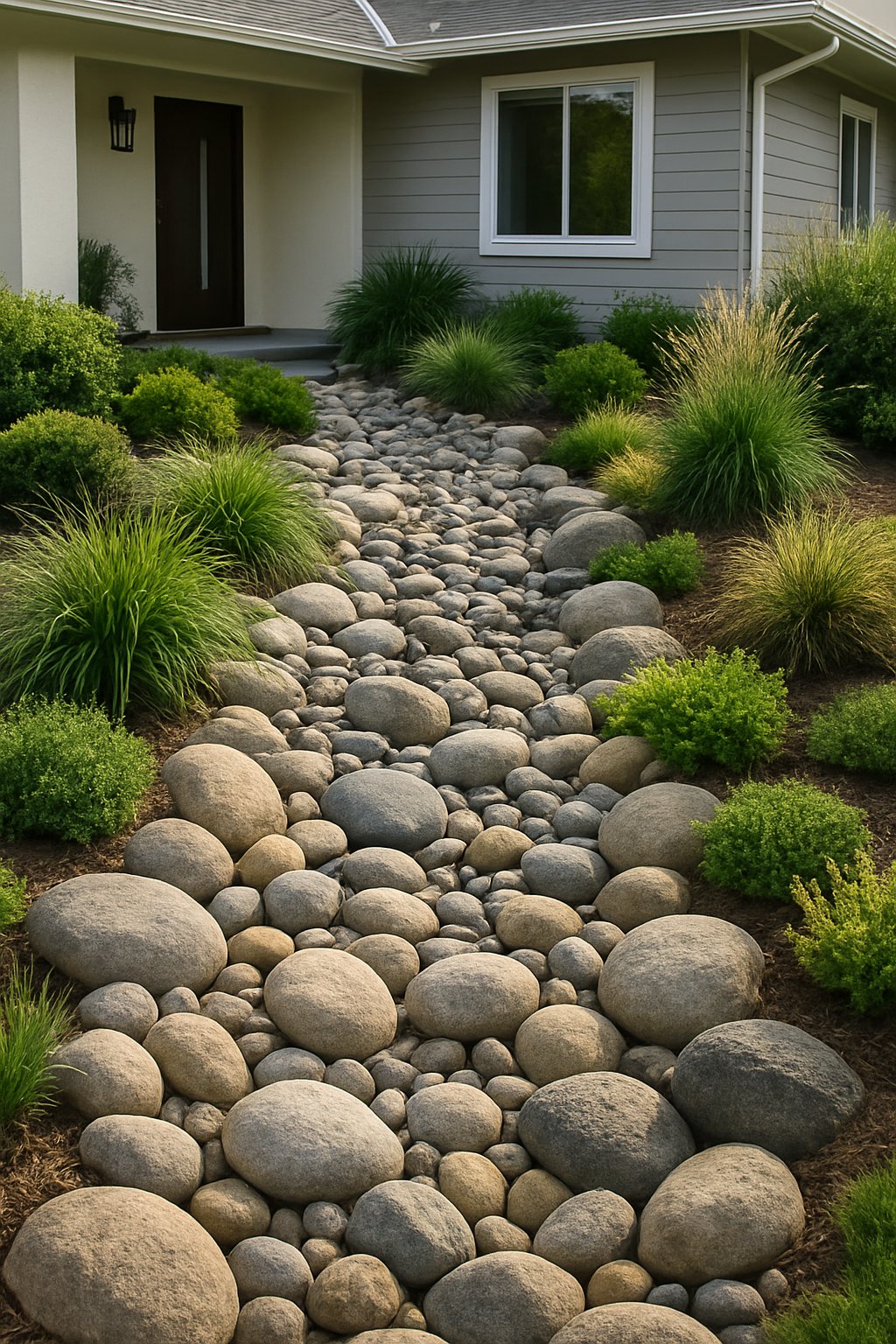
A dry creek bed can guide rainwater safely away from your home. It also helps prevent puddles and keeps soil from washing away. Lining the area with smooth stones keeps the feature easy to walk near and look after.
Choose pebbles or small river rocks for a soft, natural look. Mixing in a few larger stones adds interest. Arrange the rocks to curve gently, like a real stream. This gives your yard a peaceful, flowing feel.
Surround the bed with native plants for extra color and texture. Native plants usually need less water and care. The plants also help slow water, protecting the landscape.
A dry creek bed takes little upkeep once in place. Use it as a welcoming feature near your walkway or across a garden. It’s a simple way to add charm and keep your yard safe during rainy weather.
Creating a Safe and Accessible Front Yard
Your front yard should make daily life easier and give you peace of mind every time you walk outside. Simple changes can offer more stability, help prevent falls, and keep the yard easy to care for.
Pathway Design for Stability and Confidence
A sturdy and even path makes a big difference for your safety and comfort. You’ll want walkways that are wide enough for a walker or wheelchair—at least 36 inches is best. Look for a flat, slip-resistant surface, such as textured concrete, pavers, or brick with tight joints.
Gentle slopes, instead of steps, can help you avoid tripping. If you need to include steps, keep them low and add sturdy handrails on both sides. Solar or low-voltage lights along the path can guide you in low light and prevent shadows.
Try to keep the path clear of clutter and overgrown plants. Add a welcome mat with a non-slip back at the entrance. These small touches can boost your confidence every time you leave or return home.
Choosing Low-Maintenance Materials
Select materials that save time and energy in the garden. For paths, concrete, pavers, or decomposed granite work well and hold up over time. These options need very little upkeep and are less likely to shift or crack compared to loose stones.
Alternative ground covers, like artificial turf or mulch, can reduce mowing and weeding. Mulch also helps stop weeds while keeping soil moist. Choose plants that need less water and trimming, like native shrubs and perennials.
If possible, install drip irrigation systems for easy watering. This setup gives you more time to relax and enjoy your yard without the extra strain of heavy work.
Caring for Your Landscape Year-Round
Routine care keeps your yard looking nice while keeping things easy and safe. Good upkeep also helps your favorite plants and paths handle changes in weather, so you can keep enjoying your outdoor space.
Simple Seasonal Maintenance Tips
With a bit of planning, you can keep your landscape tidy and healthy without too much work. In spring, focus on removing old leaves and trimming any dead branches. Early weeding is important so that new plants can grow strong.
During summer, water your plants in the early morning or later in the evening to avoid too much sun. Mulching garden beds helps soil hold moisture and reduces how often you need to water. If you have grass, keep it a little longer to protect roots from heat.
Fall is a good time to clear out fallen leaves and add more mulch or compost to garden beds. You can plant bulbs at this time for next year’s flowers. In winter, gently brush snow off shrubs and avoid using salt that might hurt plants along walkways.
Helpful Supplies Checklist:
- Pruners for trimming
- Gloves for yard work
- Garden hose or watering can
- Mulch or compost
Making Adjustments for Changing Needs
As your needs change, your yard should still feel like a welcoming space. If you find bending or lifting hard, think about raised garden beds or large pots placed at waist height. These are easier to reach and help you stay comfortable.
Pathways should be wide, level, and made from non-slip materials to reduce the risk of falls. Solar-powered lights along paths and near steps make walking outside safer in the evening. Consider swapping out high-maintenance plants for hardy, low-care types to lower your workload.
Invite a neighbor, friend, or local gardening group to help with heavier tasks or simple check-ins. There’s no harm in asking for support—it’s one more way to enjoy your yard with confidence. Your landscape should fit you, not the other way around.

